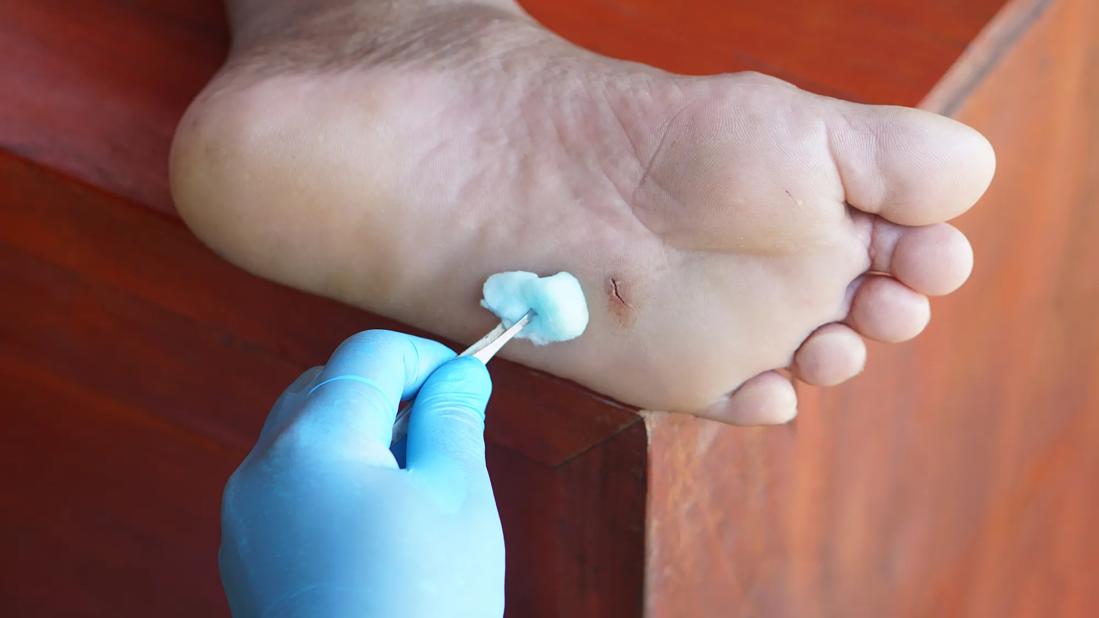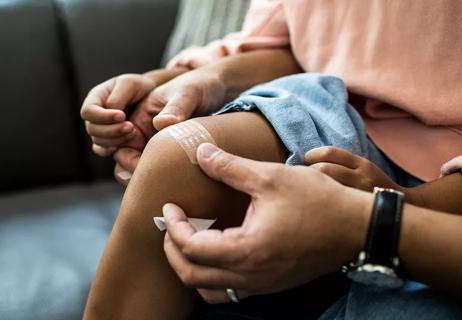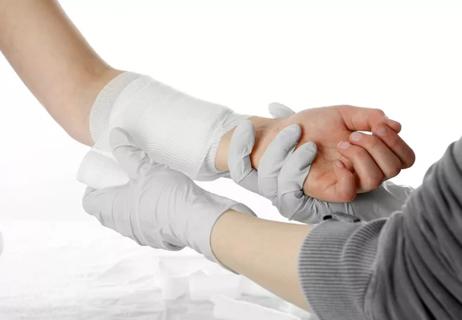Clean hands, sanitized tweezers and a soaking tub are key to removing some shards of glass

Broken glass can be tiny shards that resemble invisible splinters or big, sharp chunks. But whatever form, one thing is guaranteed: If you step on it, it’s going to hurt — and you’re going to want that piece of glass out ASAP.
Advertisement
Cleveland Clinic is a non-profit academic medical center. Advertising on our site helps support our mission. We do not endorse non-Cleveland Clinic products or services. Policy
Urgent care physician Allan Capin, MD, explains how to safely get glass out of your foot yourself, and when you might need to see an expert.
If you’ve got a piece of glass stuck in your foot, you may be able to remove it yourself. If you’re feeling calm enough to attempt your own glass-removal procedure, here’s how to do it:
Advertisement
Not too keen on removing the glass yourself? Your body may push the glass out itself — but that’s hardly a guarantee.
“A tiny piece of glass near the surface of your skin might come out on its own over a few days,” explains Dr. Capin. (Soaking your foot for 20 minutes a day might help speed up that process, too.)
Try the “wait-and-see” option if the glass is deep in your skin. But in that case, chances are, it’s not coming out on its own. “You also should not use this method if you have diabetes, since foot wounds can complicate quickly and become more serious,” he cautions.
Other risks with this approach include:
If the broken glass in your foot is unreachable or you just don’t want to attempt removing it, you have two options:
Bottom line? If you can’t remove the glass yourself, don’t be afraid to call a medical provider.
“They can advise you on next steps, such as coming into the office or going to an urgent care facility,” reassures Dr. Capin. “And you’ll have peace of mind when you know an expert got it all out.”
Advertisement
Learn more about our editorial process.
Advertisement

If the area is bleeding a lot or the wound is near your face or genitals, you likely need a specialist’s care

First, assess the seriousness of the wound, and then apply light pressure to stop any bleeding

The best tools and practices from a pediatrician

Quick action and proper care can make a big difference

The short answer from a plastic surgeon

Three common causes of chronic wounds

Injury, itching, inflammation and irritants can all lead to scabs on your scalp

Skin care product can help with acne and fight COVID-19

Start having sex about 72 hours before ovulation, then at least every other day during your fertile window

Attachment theory suggests that your earliest relationships shape connections throughout your life

It isn’t a recognized mental health disorder, but research shows that problematic social media use can negatively affect your mental health, self-esteem and sleep